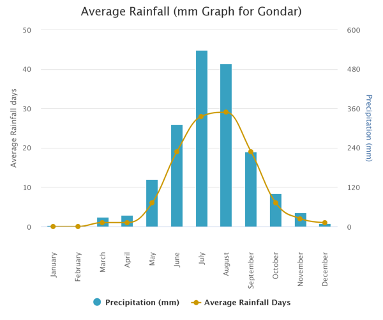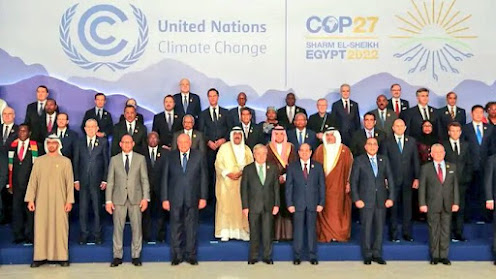The Blue Burden
The Blue Burden
At the moment, I sit at my desk with my water bottle by my side. I drink when I need to and am often quite indulgent in the amount of water I consume. I know when my bottle runs out I can go to the tap and fill it up. I always knew this was a privilege, but studying this module has truly opened my eyes to how fortunate I am. Two thirds of the population in Sub-Saharan Africa travel outside their home to collect water, this is an essential part of their routine and for at least 14 million women this trip takes longer than 30 minutes (Grahamet al., 2016).
Outside of their control:
Africa is a huge continent with differing water access and routines, therefore context is important. As shown in Figure 1, the Ethiopian region of South Gondar is subject to seasonal rain variation, with peak rainfall from May to September, less frequent rainfall from February to March and a dry season from October to February (Kloos and Zein, 1992). The impacts of climate change are making these dry and wet periods more extreme, making water collection even more unpredictable.
Figure 1- Average Rainfall Data for South Gondar
Water is an essential part of the household and is used for many chores e.g. cooking, cleaning, bathing, the consequence of water scarcity means that there is not always enough water for everyone. As a result of this, women are subject to domestic abuse from angry husbands who are frustrated with the lack of water. They are forced to put their families health at risk and resort to water stored in tankers which are a breeding ground for causing health issues such as diarrhoea (Assefa et al., 2021) In South Gondar, women often transport water using earthenware pots secured to their back with a rope. This weight has devastating effects on their posture and spine and reduces their efficiency of water collection meaning their household is likely to experience a reduction in water usage, therefore increasing their risk of sexual assault(Stevenson et al, 2012).
The dangers of collection:
The burden of collecting water falls on the women in the household and, depending where their local water source is, it is common for this to take over an hour considering the commute time, queuing and water collection. Unfortunately, due to the long commute, this can be a dangerous activity for many women. In Ethiopia, reports of rape, abduction and assault are not uncommon during the daily trek to retrieve water. Men take advantage of these long commutes and often position themselves where the path is poorly lit or wait until nightfall to find their victim (Murphy et al., 2019).
Figure 2- Ethiopian girls carrying water on their backs.
Lost opportunities:
Children are often called upon to help their mother with the task of water collection. However, the result of this is missing out on or being too exhausted to benefit from vital education that can help them in future careers. Women are also too swamped with household tasks that they are unable to participate in any leisure activities, reducing their quality of life.
Reducing water collection time is an important step to achieve Sustainable Development Goal 6 ‘Clean Water and Sanitation’, however, it should not be viewed as the solution. The following blogs will explore a variety of issues that need to be addressed in order for goal 6 to be met.




I loved reading this blog, particularly your introduction...what a gripping start to your blog! This blog is highly informative, especially with the embedded examples and stats from various African countries. Perhaps a photo/video would be useful to visualise some of these concepts!
ReplyDeleteThank you so much for your feedback Kavitri I really appreciate it, I am glad you enjoyed it. I have uploaded a figure to highlight the annual rainfall variation in South Gondar which I hope people find useful.
Delete